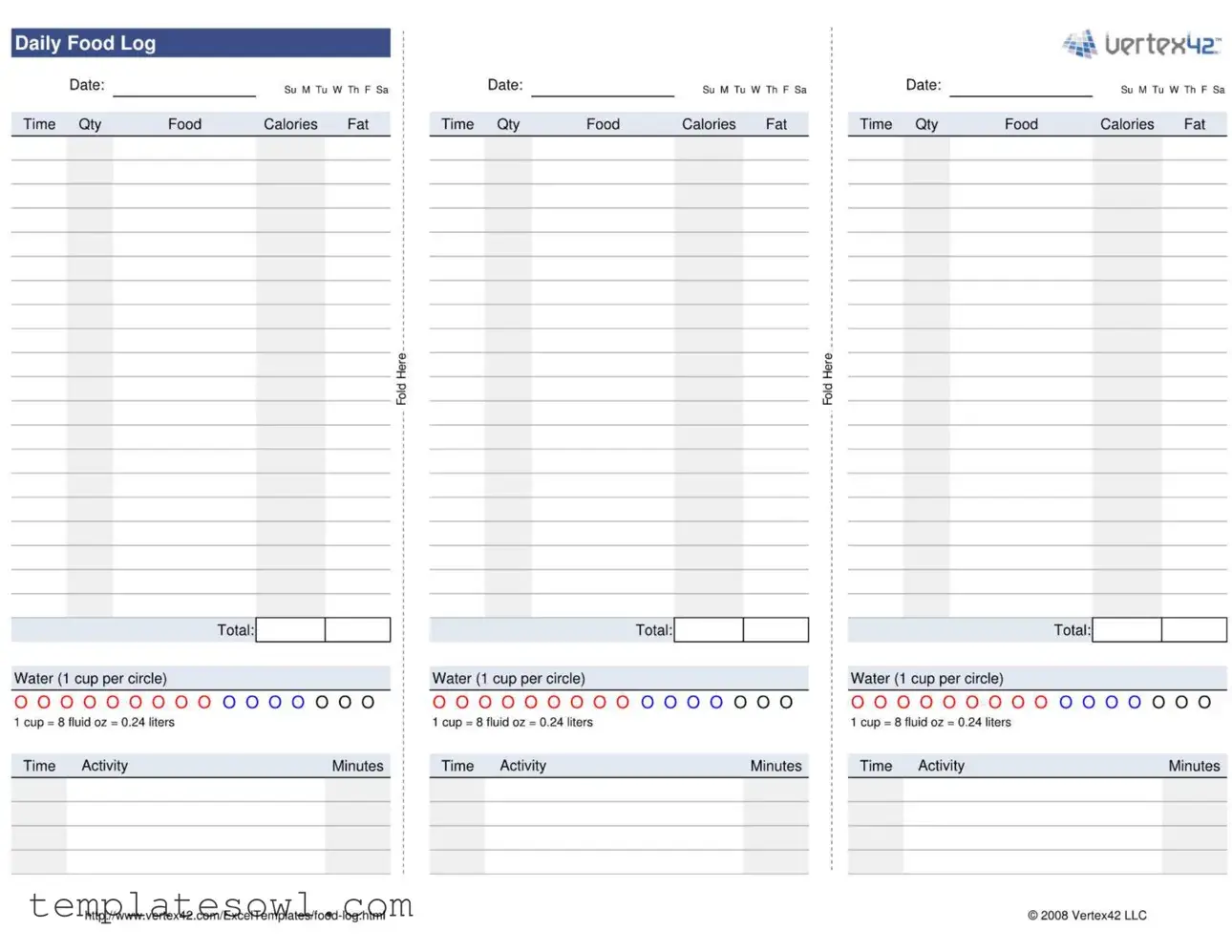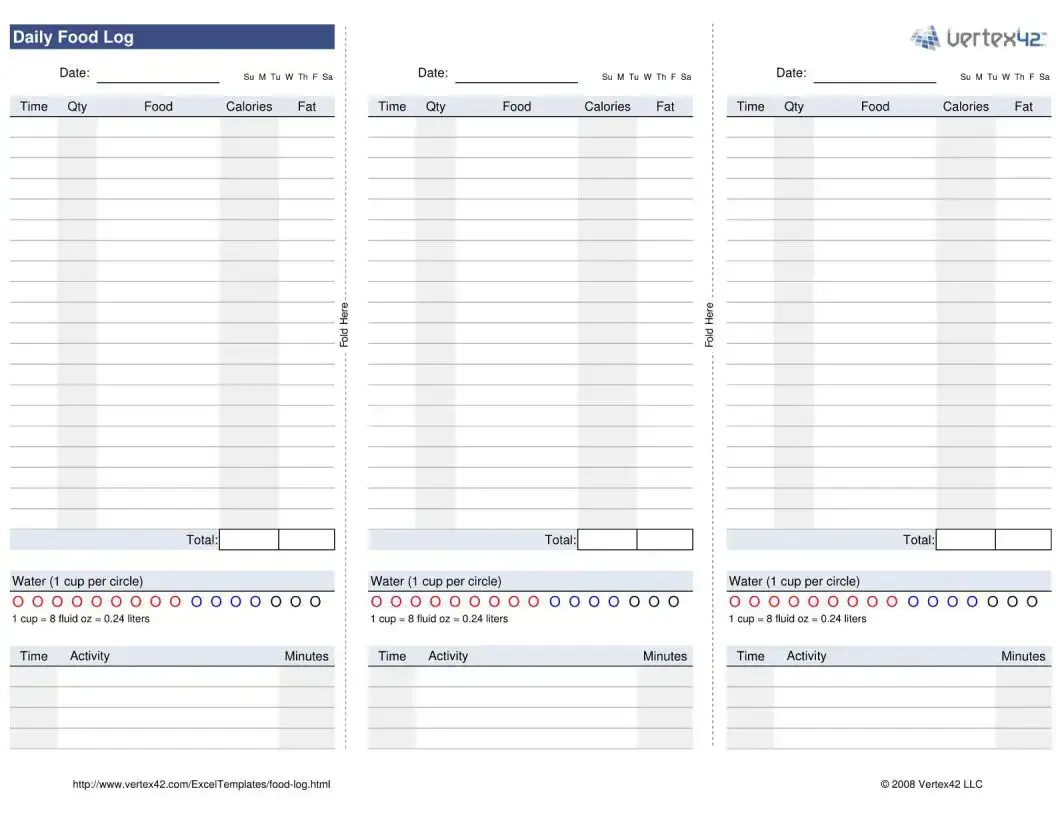What is the purpose of the Daily Food Log?
The Daily Food Log serves as a tool for tracking food and beverage consumption. By logging details such as the date, time, quantity, and nutritional content of meals and snacks, individuals can better understand their eating habits. This awareness can help in making healthier choices and achieving nutritional goals.
How should I fill out the Daily Food Log?
To fill out the Daily Food Log, start by entering the date and time of each food item consumed. Record the quantity and specify the food or beverage. Next, list the calories and fat content, if applicable. For hydration tracking, include water intake by circling each cup consumed. Consistent recording will provide an accurate picture of your dietary habits.
Can I use the Daily Food Log to track my water intake?
Yes, the Daily Food Log includes a section specifically for tracking water intake. Each circle represents one cup of water, which equals 8 fluid ounces or 0.24 liters. By marking off a circle for every cup of water consumed, you can easily monitor your hydration levels throughout the day.
Is there a specific time frame for using the Daily Food Log?
The Daily Food Log can be used at any time. Some individuals prefer to use it daily, while others might find it more beneficial to track their intake over a week or specific time periods. The flexibility allows you to adapt the form to your needs, whether for short-term tracking or a long-term dietary plan.
How can I use the information from the Daily Food Log?
The information recorded in the Daily Food Log can highlight patterns in eating habits. Reviewing your entries can reveal where you might be consuming excess calories or fats. Moreover, recognizing your water intake can guide you in ensuring adequate hydration. This data can be valuable for making adjustments to your diet in consultation with a healthcare professional or nutritionist.
Can the Daily Food Log help with meal planning?
Absolutely! By reviewing the Daily Food Log, you can identify your eating habits and preferences. This insight facilitates more effective meal planning, ensuring that you include nutritious foods and manage portion sizes. Additionally, tracking your intake may inspire new meal ideas and promote variation in your diet.

